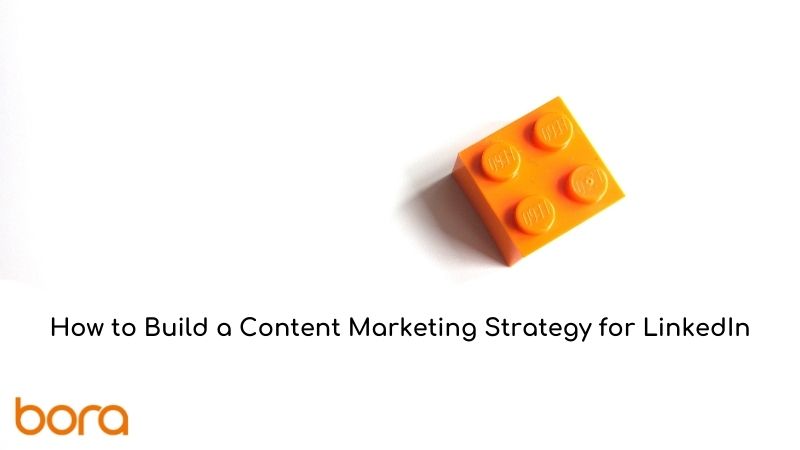So, you’ve created a LinkedIn profile for your business, added a company logo, filled out all the fields with keywords your audience resonates with, and now you want to learn how to build a LinkedIn content marketing strategy? Well, you’ve come to the right place…
Planning and executing a LinkedIn content marketing strategy has now become a ‘must-have’ for B2B organizations. Below are 5 actionable steps you can take today to start creating your content marketing strategy:
1. Identity buyer personas
The first step in creating your content marketing strategy is to identify your various buyer personas – These are the individuals your business wants to target. Map out ‘who’ your audiences are, and then ask the following key questions:
- Which audiences are you serving? Are they business owners, directors, senior managers, department managers, and/or other key decision-makers?
- What is the demographic profile of each buyer persona?
- What are the interests of these audiences and what content resonates with them?
2. What do they care about?
Once you have identified who your audiences are, it is important to understand what they care about. For example, if your audience is cybersecurity social media marketingWhat is Social Media Marketing? Social Media Marketing (SMM) is a strategic approach that uses social media platforms to build a brand, increase sales, and drive website traffic. It involves... More professionals, they would care about growing their LinkedIn presence, how to attract more leads through social media, ways to increase website traffic and so forth.
Knowing what your ideal customer cares about tells you exactly what content to curate that will gauge their interest. This is how you can build a LinkedIn audienceWhat is a LinkedIn Audience? A LinkedIn audience is made up of professionals and businesses across various industries who use the platform for networking, career development, and sharing industry insights.... More that engages with your brand, responds to your organization’s offers, and becomes your customers in the mid/long term.
3. Identity your content pillars
“Content pillars” is simply a fancy way of saying what are your content topics. To build content pillars, you would first need to identify the key topics that interest your audience. You would then create content around these topics. For example, if you are the social media manager of a cybersecurity organization, your content pillars could be RansomwareWhat is Ransomware? Ransomware is a type of cyberattack in which the attacker infects a computer with malicious software that encrypts the victim's data. The computer usually becomes locked, presenting... More, Machine Identity Management, Cloud SecurityWhat is Cloud Security? Cloud security refers to the measures and strategies used to protect data, applications, and resources stored, accessed, and processed in cloud computing environments. It involves a... More, EncryptionWhat is Encryption? Encryption converts readable data (plaintext) into a scrambled and unreadable format (ciphertext) using an algorithm and a key. The primary purpose of encryption is to ensure the... More and PKI.
Remember the topics you have chosen to be your content pillars are what your audience cares about, so choose them wisely. By creating content pillars, you’ll never run out of content ideas to post on LinkedIn.
4. Posting Schedule
Having a consistent stream of posts scheduled in advance is important to be ahead of the game. This will enable you to post regularly, monitor content performance, and save a lot of time. If you are a solopreneur, I would recommend posting at least one post daily, gradually increasing your daily postings to three a day – Start slow and work your way up.
If you have a marketing team supporting you, post three or more posts daily – This will allow you to gain greater exposure, increase your brand awareness, enable you to have more impressions on your posts, and grow your LinkedIn followers.
5. Your Marketing Funnel
No content marketing strategy is complete without a marketing funnel. I would recommend that 80% of your posts comprise of educational posts. These posts would aim to deliver value to your audience, which in turn leads to creating trust with your audience. Consistently delivering value to your audience can firmly establish you as a brand authority in your niche.
The remaining 20% of LinkedIn posts should include a CTA, linking to your lead magnet, webinar, newsletter signup landing page, or your podcast. Building trust through delivering value ensures your audience is more receptive when you post an offer of a product/service or want your audience to sign up for your webinar.
Final thoughts
With the right content strategy in place, your organization will be exposed to an abundance of opportunities, such as opportunities to increase traffic, leads, and ultimately make sales. The key is knowing how to take advantage of these opportunities when they become available.
By executing your content marketing strategy, you are ensuring the opportunities come to you in the form of customers, more followers and interest in your products/services.
if you want to FastTrack your LinkedIn success, speak to one of our consultants, and see how Bora can help your organization meet your LinkedIn goals.



